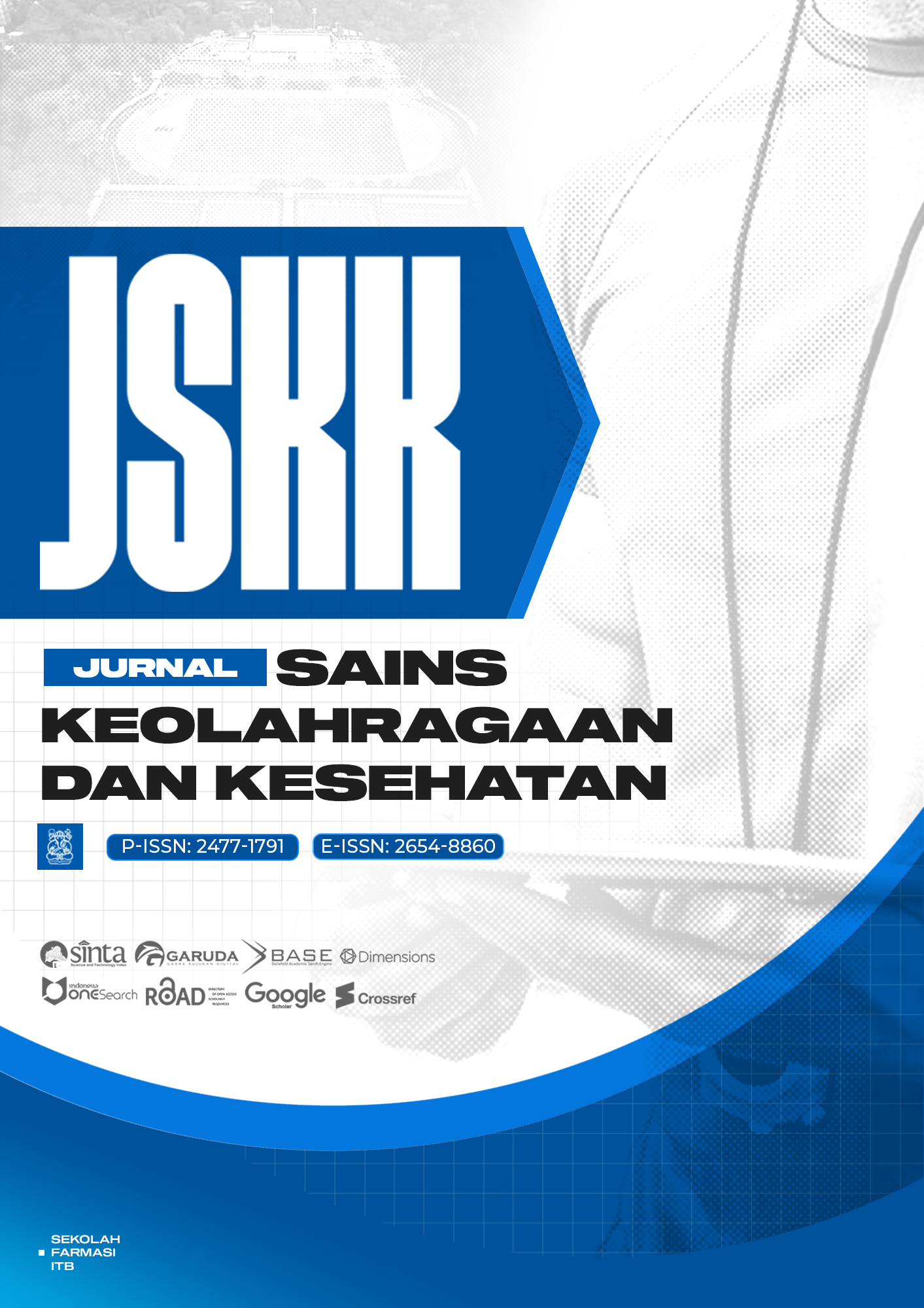The Physical Dominant Component of Kabaddi: Is It a True Predictor?
DOI:
https://doi.org/10.5614/jskk.2025.10.1.7Abstract
Kabaddi is a sport that uses good physical abilities; so far, the dominant physical components that affect achievement in Kabaddi sports are very few in a comprehensive discussion. This study aimed to determine the dominant physical factors that influence the accomplishment of kabaddi sports. The research method used is descriptive-quantitative; the research sample is Badung district Kabaddi athletes, totalling 31 athletes. Data collection techniques are carried out in the form of tests and measurements, with several test items carried out, such as hearing reaction speed, seeing reaction speed, anticipatory reaction speed, agility, flexibility, leg muscle power, back muscle strength, leg muscle strength, hand squeeze strength (right), hand squeeze strength (left), shoulder muscle strength (pull), shoulder muscle strength (push), abdominal muscle strength, arm muscle strength, balance, cardiovascular endurance, and achievement. The results of the research show that of the several test items carried out, the most vital dominant factor was the strength of the back muscle was 89.0%, and the lowest namely agility was 33,9%. The conclusion is that the dominant factor I consists of age, body weight, agility, back muscle strength, right-hand squeeze strength, left-hand squeeze strength, and shoulder muscle strength (pull); the dominant factor II consists of height, leg muscle strength, shoulder muscle strength (push), abdominal muscle strength, and arm muscle strength.
Downloads
Published
How to Cite
Issue
Section
License
Copyright (c) 2025 Made Bang Redy Utama, sri_indah_unj Ihsani, Adi S, Maryoto Subekti

This work is licensed under a Creative Commons Attribution-ShareAlike 4.0 International License.
This is an open-access article distributed under the terms of the Creative Commons Attribution-ShareAlike 4.0 International License which permits unrestricted use, distribution, and reproduction in any medium. Copyrights of all materials published in JSKK: Jurnal Sains Keolahragaan dan Kesehatan are freely available without charge to users or / institution. Users are allowed to read, download, copy, distribute, search, or link to full-text articles in this journal without asking by giving appropriate credit, provide a link to the license, and indicate if changes were made. All of the remix, transform, or build upon the material must distribute the contributions under the same license as the original.











